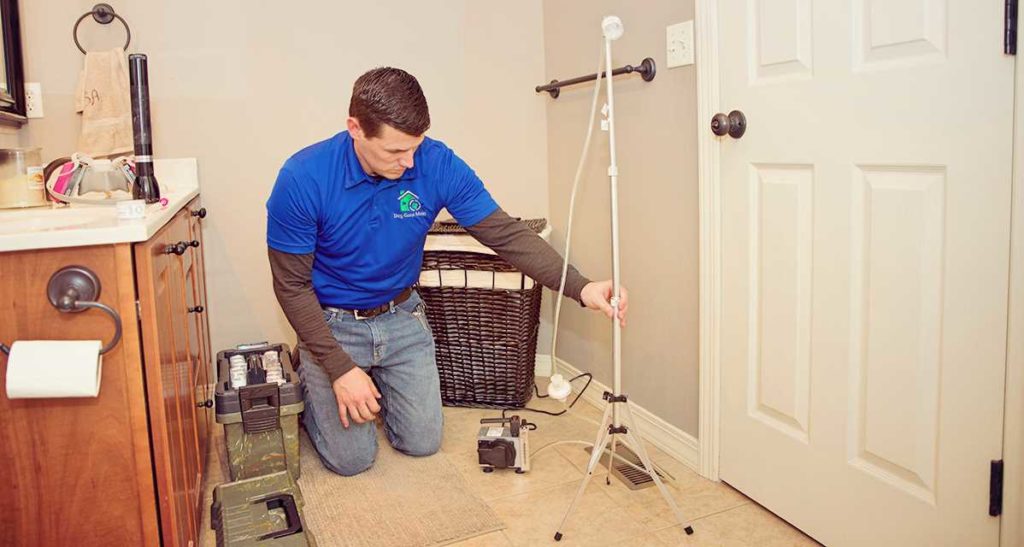Tools Of The Trade For Mold Removal Companies in Springfield Missouri
If you’ve had a leak recently that’s been causing excessive moisture or if a family member has come down with a sudden case of allergies, then you might suspect you have a mold issue in your home. Your best course of action is calling a certified mold inspection company in Springfield Missouri to find out what’s going on.
How do mold removal companies know whether you have a legitimate mold issue that needs to be addressed? For starters, we are trained to know what to look for and where to look for potential mold issues.
Next, our certified mold inspectors are equipped with specific tools that you probably don’t have lying around the house. But most importantly, if the mold inspection does find mold, we know whether it’s going to need professional mold remediation or if it’s a minor issue that the homeowner can take care of themselves.
When you’re working with a certified mold inspection company in Springfield Missouri, these are the five most important tools that your mold inspector will probably use on your inspection.
Flashlight
This might be the most common mold inspection tool that you do have lying around your house, but you still have to use it properly to find mold. If you shine a flashlight directly at a white painted wall and don’t see anything, that doesn’t mean that mold isn’t there.
When looking at walls with surface mold on them, you need to shine your flashlight at an angle and look from the side, not straight on. This is how you can see the mold growth coming out of the walls.
Hygrometer
A hygrometer takes humidity readings in your home. You want your indoor humidity levels to generally be somewhere in the range of 35-55%. Anything lower than that and you’ll probably be uncomfortable in your home. But anything higher than 55% and there is enough moisture in the air for mold growth to occur.
Moisture Meter
A pinless moisture meter is uninvasive and can be used to read moisture levels of many building materials throughout your home. Tile and wood flooring, as well as drywall are some of the most common areas to have hidden moisture. Knowing the moisture content underneath the tile in your bathroom, or moisture content of the drywall underneath a window is very helpful in knowing if you have a hidden leak.
Air Sampling Kit
This isn’t needed on every inspection, but taking air quality samples can be helpful in certain mold inspection situations. Using a pump and Air-O-Cell cassette, the air inside your home can be tested to see if you have elevated counts of mold spores throughout your home.
Unless the mold spores are actively colonizing, certain mold problems can’t be seen by the naked eye, so having your air analyzed by an accredited lab technician can be helpful in solving a hidden mold problem.
Thermal Imaging Cameras
Like air quality sampling, thermal imaging isn’t needed for all mold inspections, but it can be useful in solving certain hidden mold issues. Having infrared images that measure temperature differentials can help your mold inspector locate a possible leak behind a wall.
Most of the time a qualified mold inspector can find a significant mold problem using nothing more than a flashlight. But when dealing with some trickier situations, having these extra mold inspection tools at our disposal is very helpful.
